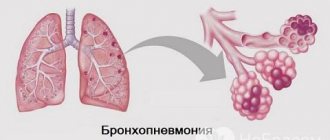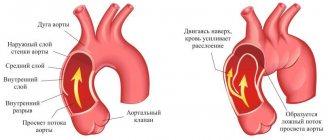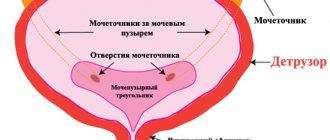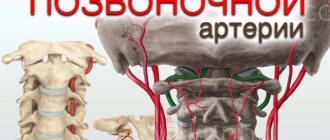Pulmonary embolism (PE)
Such a beautiful name - Tela - does not belong to a girl at all, but to one of the most terrible and severe complications, the full name of which is acute pulmonary embolism. We all know that blood clots are dangerous clots in blood vessels: as a result of thrombosis, myocardial infarctions occur (death, or necrosis of a section of the heart muscle), and strokes - necrosis of part of the brain, which occurred as a result of acute oxygen starvation when the lumen of a vessel is blocked.
But it turns out there is another way - TELA. In the world, this is the third type of serious disorders in the cardiovascular system, after heart attack and stroke. So, in the USA alone, despite its highly developed medicine, more than 300 thousand people have to be hospitalized with this pathology every year - more than the number who met on the Kulikovo Field. With pulmonary embolism the mortality rate is also very high.
Thus, every sixth patient dies, or 50 thousand annually, in the USA alone. Naturally, generalizing global data, we can assume that the true incidence is several times higher. What kind of condition is this, how does it develop, what symptoms does it manifest, and how is it treated?
Body diagnostic methods
Radiation research methods play an important role in the diagnosis of pulmonary embolism. For many years, the main imaging modality used in the study of patients with this diagnosis was ventilation-perfusion scintigraphy. However, due to the advent and general availability of faster computed tomography scanners, computed tomography has become an important method for diagnosing not only pulmonary embolism, but also deep vein thrombosis of the lower extremities.
In patients suspected of this diagnosis, a chest x-ray is performed; if pathological changes are detected, a spiral CT scan is required; if no pathological changes are detected, ventilation-perfusion scintigraphy is performed. Quantitative analysis for D-dimer, according to research results, is characterized by a high negative predictive value, and in some cases eliminates the need for CT angiography.
CT signs of pulmonary embolism. A CT angiogram performed on a 53-year-old patient shows an intraluminal filling defect; There is occlusion of the artery of the anterior basal segment of the lower lobe of the right lung. Signs of infarction of the right lung are also detected in the form of a triangular-shaped area of consolidation, with a wide base facing the pleura (Hampton's tubercle).
Traditional angiography of the pulmonary arteries, performed in an X-ray operating room, is an invasive, time-consuming, and more expensive research method. This procedure has limited use and should only be used in patients in whom other techniques fail to establish a diagnosis. In patients with suspected deep vein thrombosis, evaluation should begin with ultrasound of the lower extremities.
In conditions of increased risk of deterioration of the patient's condition, correct interpretation of radiological studies is important. In complex and controversial cases, re-analysis of CT results by a specialized specialist can help: such consultation increases the accuracy of diagnosis and reduces the risk of diagnostic error. In Russia, there is a service for remote consultations of radiologists - the National Teleradiological Network.
LIMITATIONS OF DIAGNOSTIC METHODS
The ventilation-perfusion scintigraphy method may not show reliable signs of pulmonary embolism.
Spiral CT pulmonary angiography requires the use of an iodinated contrast agent, which may not be possible in patients with impaired renal function or allergic reactions to the contrast agent.
CT angiography may miss small thrombi in the subsegmental branches of the pulmonary arteries. Therefore, assessing small branch thromboembolism on CT may be difficult.
Compared with CT, performing traditional subtraction angiography (DSA) requires greater competence and specialized knowledge on the part of the staff. This method is also invasive, more expensive, less accessible and time-consuming. In addition, central mural thrombi, easily visible on CT, may be missed by conventional pulmonary angiography.
Why it occurs: reasons
When a person develops a blood clot that disrupts the systemic circulation, there is a high probability of it breaking off. With such a violation, thrombotic syndrome is established. Thromboembolism can occur with thrombophlebitis of the vessels of the lower extremities and deep veins. The source of the disease is often diseases of the heart and vascular system. The development of embolism is influenced by the following reasons:
- prolonged stay in a static position;
- drug therapy that increases blood viscosity;
- thrombophilia;
- signs of atherosclerosis;
- arterial hypertension or hypertensive crisis;
- varicose veins of the upper or lower extremities;
- generalized blood poisoning;
- systemic diseases;
- for fractures of large bone structures;
- cancerous tumors of different localization;
- internal bleeding;
- abuse of tobacco products;
- lack of fluid in the body;
- during and after surgery;
- bearing a child and labor;
- senile changes in the body.
The trigger for the development of thromboembolism can be increased physical activity, which professional athletes often experience.
X-ray of the lungs with pulmonary embolism
Pathological changes on chest x-rays are detected in most cases of pulmonary embolism, but are not specific. The most commonly detected pathological changes on radiographs include atelectasis (collapse) of part of the lung, pleural effusion, decreased transparency of the lung tissue, and high standing of the right or left dome of the diaphragm. Classic X-ray signs of pulmonary infarction are the presence of a wedge-shaped (triangular) darkening, with a wide base facing the pleura, the apex of which is directed towards the root of the lung (Hampton's tubercle), or a decrease in the severity of the vascular pulmonary pattern in the zone of thromboembolism (Westermarck's sign).
Other changes on radiographs detected with pulmonary embolism are expansion of the central pulmonary artery with its sharp break - “cut off roots”, an increase in the size of the heart (especially its right parts), as well as signs of pulmonary edema. These changes can be combined with acute clinical symptoms of cor pulmonale. The absence of changes on the chest x-ray in a patient with severe respiratory distress and hypoxemia, but without signs of bronchospasm or atypical blood flow in the heart, is highly suspicious for PE. In general, chest radiography cannot be used to confirm or refute the diagnosis of PE; however, radiography and ECG may be helpful in confirming alternative diagnoses.
What causes thromboembolism?
Thromboembolic disease in an organ occurs due to:
- hereditary predisposition. If pulmonary thrombosis occurred in blood relatives, then there is a high probability of pathology in you;
- problems with blood clotting. Symptoms of the disease arise from neoplasms of a malignant or benign nature in the hematopoietic organs;
- long-term surgical interventions. Pulmonary artery thrombosis often occurs during abdominal operations that last 4 hours or more;
- fractures. Violations of the integrity of the pelvic and femur bones are dangerous. The lumens of blood vessels are often clogged with droplets of fat and bone marrow. Therefore, thromboembolic symptoms often appear after fractures;
Scheme of thrombus formation in the lumen of a vein and its migration into the pulmonary artery system
- pregnancy and childbirth. While waiting for a baby, the cardiovascular system experiences stress. The hormonal background changes, blood density increases. After childbirth, there is a high chance of detecting signs of thromboembolism. These are the consequences of having an extensive wound to the mucous membrane, which is covered with blood clots and blood crusts of various sizes;
- Heart disease provokes blockage of the vessel. Therefore, ailments require correction, following the doctor’s recommendations in order to avoid the problem;
- excess body weight. With obesity, the chances of getting problems with the circulatory system in the lungs increase;
- smoking. Nicotine increases blood density, increases the risk of thrombosis and coagulation pathologies;
- neoplasms of benign and malignant nature;
- incorrect use of hormonal drugs or contraceptives.
Computed tomography (CT) in the diagnosis of the body
The technical development of the CT method, especially the emergence and introduction of multidetector devices (MSCT), has led to the fact that computed tomography has become an important diagnostic method for suspected pulmonary embolism. Contrast-enhanced CT is increasingly used as the primary method of investigation for pulmonary embolism, especially in those patients in whom pathological changes were detected on chest x-ray and the results of scintigraphic examination are not of diagnostic value.
CT pulmonary angiography can visualize emboli directly and is non-invasive and easy to use. In recent years, computed tomography scanners have been installed in almost all large hospitals, so the method is relatively affordable. Also, CT allows you to obtain additional information regarding an alternative diagnosis, which is a great advantage of this diagnostic method over classical pulmonary angiography and scintigraphy.
Contrast-enhanced spiral CT allows you to contrast the lumen of the pulmonary vessels and see a thrombus in their lumen. After an intercontinental flight, a young man developed acute chest pain and breathing problems. CT scan visualizes thrombus in the anterior segment artery of the left upper lobe ( LA 2) and the anterior segment artery of the right upper lobe ( RA 2).
CT scan for chronic thromboembolism in a 69-year-old patient with pulmonary arterial hypertension. The tomogram visualizes a parietal thrombus with the presence of point calcifications, located parallel to the anterior wall of the right lower interlobar artery.
In most cases where CT is positive for pulmonary emboli, the emboli are multiple and intraluminal filling defects (enhancement defects) are seen in the larger central arteries and in the segmental and subsegmental vessels. Most often, emboli are found on both sides and are localized in the lower lobe arteries. An obvious filling defect in a single segmental or (especially) subsegmental vessel can be difficult to recognize. It must be taken into account that artifacts associated with the partial volume effect may be mistaken for a filling defect in the subsegmental artery.
Since deep vein thrombosis and pulmonary embolism are partial aspects of a single disease, after CT angiopulmonography, CT venography can be performed without additional administration of a contrast agent. In this case, the research time will increase by only a few minutes.
Get a CT angiopulmonography in St. Petersburg
Symptoms
Blood clots in large vessels and arteries are quite difficult to diagnose, so the mortality rate among the population with this diagnosis is quite high. In the case of a pulmonary thrombus, how long a person can live depends on the medical care provided, but in most cases death occurs instantly. Clinical signs of pulmonary embolism can be suspected in advance. This condition is often characterized by the following symptoms:
- Dry cough with sputum mixed with blood.
- Dyspnea.
- Pain behind the sternum.
- Increased weakness, drowsiness.
- Dizziness, up to loss of consciousness.
- Reduced blood pressure.
- Tachycardia.
- Swelling of veins in the neck area.
- Pale skin.
- Increase in body temperature to 37.5 degrees.
The above symptoms are not always present. According to statistics, only 50% of people experience such signs. In other cases, the symptoms of a pulmonary thrombus go unnoticed, and the person may die within minutes of the attack.
Possible CT errors in the diagnosis of a body
As for pulmonary embolism of the large (central) branches of the pulmonary arteries, the sensitivity of spiral CT in detecting thromboembolism approaches 100%. For subsegmental and small branches, sensitivity ranges from 5% (according to the results of the PIOPED study) to 36% in other studies. The true significance of small emboli is not clearly established, however, thromboembolism of small branches of the pulmonary arteries may have clinical significance in patients with limited cardiopulmonary reserve.
Conventional pulmonary angiography allows for more detailed assessment of subsegmental vessels compared to CT, however, overlaps encountered when visualizing small vessels remain a limiting factor. As a result, the agreement between studies for isolated subsegmental pulmonary embolism is only 45%.
Studies have shown that favorable clinical outcome was achieved in patients (with a negative predictive value of 99%) whose CT findings were interpreted as negative for PE and who did not receive anticoagulation therapy or catheter-based thrombolysis. The outcome was similar to that of patients in whom there was clinical suspicion but no emboli were detected on pulmonary angiography. Therefore, although some small emboli may be missed on CT, the morbidity associated with PE is not high.
Modern multidetector computed tomographs are characterized by a significantly higher scanning speed, allowing thin-slice (1.25 mm) spiral CT angiopulmonography to be performed during a short breath hold (10-15 seconds). At the same time, segmental and subsegmental vessels become better distinguishable, changes are easier to interpret; The consistency of results across studies is also improved.
And, although the use of MSCT increases diagnostic capabilities, a large amount of data (for example, with CT angiopulmonography using thin slices, performed on a tomograph with 16 rows of detectors, 500–600 slices are obtained) leads to an increase in the load on any system intended for analysis and archiving information. In the future, the advent of automated detection algorithms and increased use of maximum intensity projection (MIP) reconstructions will be useful for identifying pulmonary emboli based on the large volume of MDCT data.
Possible errors in the interpretation of CT results are due to the partial volume effect: the overlap of perivascular soft tissues, bronchial branching zones, and blood vessels that do not run in a vertical direction. Thus, lymphoid and connective tissue, located mainly near large vessels, between the artery and the bronchial wall, can be mistaken for a blood clot.
Artifacts caused by blood flow and movement can lead to false filling defects: the likelihood of their presence must be taken into account when assessing the quality of the study and analyzing the data obtained. False filling defects due to blood flow can also occur with CT venography, causing a false-positive result.
MRI in the diagnosis of pulmonary embolism
A small number of studies suggest that MRI can be used in the diagnosis of PE. At the same time, the use of MRI is limited; This method is used mainly for patients with impaired renal function or who have contraindications to the administration of iodinated contrast agents. The use of the latest intravascular contrast agents and methods that eliminate interference from respiratory movements makes the role of MRI in the diagnosis of pulmonary embolism more significant.
The PIOPED III multicenter study was conducted to evaluate the sensitivity and specificity of MR angiography alone and in combination with MR venography in the diagnosis of pulmonary embolism and deep vein thrombosis. This study is the first large-scale attempt to evaluate the use of MRI to diagnose PE. According to the study findings, technically correctly performed MR angiopulmonography alone has a sensitivity of 78% and a specificity of 99%, while the combination of MR angiopulmonography and MR venography shows a sensitivity of 92% and a specificity of 96%, but in at the same time, in 52% of patients (194 out of 370), the results obtained were incorrect due to technical reasons. The PIOPED III study concluded that, despite the benefits of MRI, poor technique in 25% of all patients limits the widespread use of MR angiopulmonography and MR venography in the diagnosis of PE.
Scintigraphy and angiography for pulmonary embolism
The multicenter PIOPED study (1990) examined the use of ventilation-perfusion scintigraphy and pulmonary angiography; It was found that normal results of ventilation-perfusion scintigraphy practically exclude PE, and changes with a high degree of confidence practically confirm the diagnosis. However, the diagnosis of pulmonary embolism was confirmed or excluded only in 174 patients out of 713 (24%) – in those whose clinical symptoms clearly correlated with changes on the scans. In most patients, including those who had cardiopulmonary diseases underlying the occurrence of pulmonary embolism, the results of ventilation-perfusion scintigraphy were questionable or had no diagnostic value, which required additional studies. Based on this, in patients with pathological changes on chest radiographs, CT rather than scintigraphy is the preferred primary screening diagnostic method.











